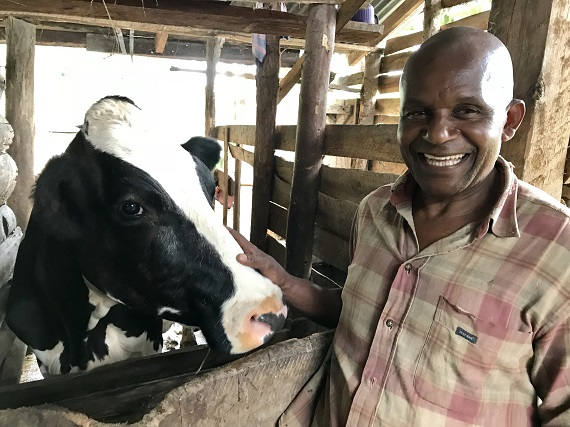Dossier Posted on 2021-08-16 11:13:34
Improved animal population data and production systems classification to support estimates of the burden of animal diseases
Keywords
Authors
D. Mayberry(1), L. Yin(1), P. Schrobback(1) & Mario Herrero(2)*
(1) Research Scientist, Commonwealth Scientific and Industrial Research Organisation (CSIRO), Brisbane, Australia.
(2) Chief Research Scientist, Commonwealth Scientific and Industrial Research Organisation (CSIRO), Brisbane, Australia.
* Corresponding author: Mario.Herrero@csiro.au
The designations and denominations employed and the presentation of the material in this article do not imply the expression of any opinion whatsoever on the part of the OIE concerning the legal status of any country, territory, city or area or of its authorities, or concerning the delimitation of its frontiers and boundaries.
The views expressed in this article are solely the responsibility of the author(s). The mention of specific companies or products of manufacturers, whether or not these have been patented, does not imply that these have been endorsed or recommended by the OIE in preference to others of a similar nature that are not mentioned.
A great deal of livestock data has been collected over time; however, the quality ranges from poor to excellent. Since these data are held by many different organisations, in many different forms, and much of this information is not available in a harmonised or even organised and cohesive manner, it can be difficult to access.
Our team of international scientists will collate existing data from livestock and aquatic animal production systems, focusing on populations, productivity and prices of inputs (such as feed) and outputs (such as meat and milk). Diverse data sources will include public, non-governmental and private organisations at the global level; in particular for the case study country, Ethiopia. Our scientists will also identify any missing data that needs to be collected to provide a more comprehensive understanding of the burden of animal diseases.
Working closely with colleagues from the University of Zurich, Switzerland, we will develop a classification system for the different livestock production systems data, providing the basis for an estimation of the animal health loss envelope. Our analysis will provide information on the biomass of and economic investment into the animals in these production systems and, where possible, the gender roles involved in animal production. This will provide the basis for differentiating the burdens of animal disease between production systems, and highlight the gender balance of the burden.
The methodology developed will be embedded in models hosted by the prototype GBADs knowledge engine which is being developed by collaborators at the University of Guelph, Canada. The GBADs network of scientists will make this information publicly available by developing easy-to-use, Web-based, data visualisation dashboards and publishing articles in scientific journals. This will enable decision-makers and other interested stakeholders to easily access and understand the livestock data, assisting in evidence-based decision-making for investments and minimising adverse impacts on the environment and public health. It will also help smallholder livestock keepers to allocate their scarce resources to those health issues that are most economically important to their livestock production enterprises, and therefore have more impact on their livelihoods.
https://doi.org/10.20506/bull.2021.1.3258










